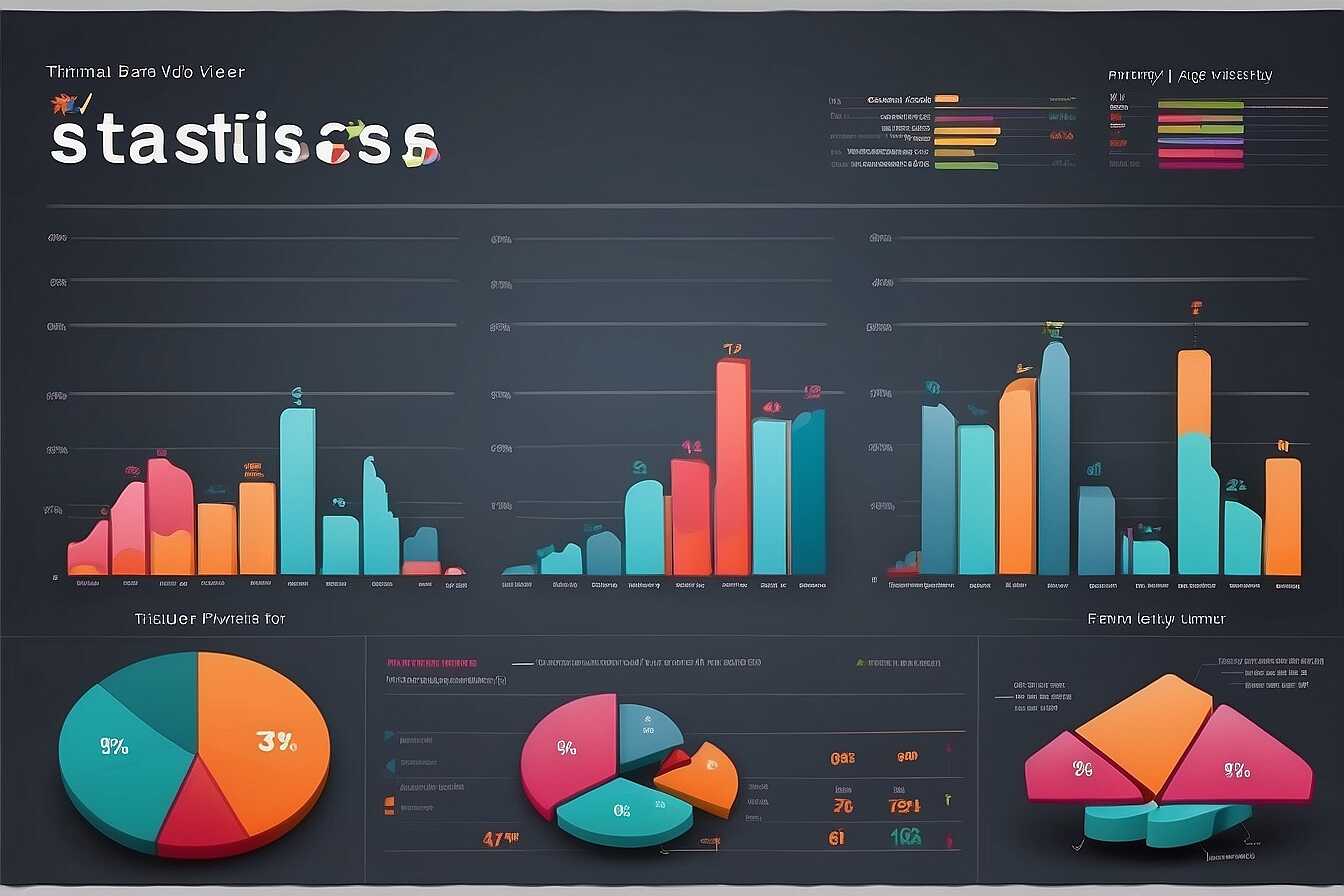Google’s core algorithm updates significantly impact website traffic and visibility, often reshaping search engine results. Understanding how these updates work can help you navigate the landscape of SEO more effectively. At Metrics Rule, a Vancouver-based SEO firm, we emphasize the importance of staying informed about these changes to adapt your strategies. With our expertise in technical and on-page SEO, we aim to provide you with practical insights that enhance your online presence and drive more traffic to your site.
Understanding the Basics of Google Core Algorithm Updates
Google core algorithm updates are significant changes made to the search engine’s ranking algorithms. These updates aim to improve the relevance and quality of search results, directly impacting website traffic and visibility. For site owners, it is essential to stay updated with these changes because they can lead to fluctuations in SERP (Search Engine Results Page) rankings. Factors like content quality, keyword relevance, and user experience are often targeted in these updates. Understanding how these elements interact can help website owners adapt their SEO strategies effectively. Typically, Google releases several core updates each year, which means consistently reviewing and optimizing your site is vital for maintaining or improving visibility.
Common Themes in Core Algorithm Updates
Core algorithm updates usually focus on enhancing specific aspects of search engine performance. For instance, updates may improve the algorithm’s ability to evaluate content quality, user engagement, and page loading speed. Knowing the common themes of these updates can provide useful insights for website optimization. For example, an update might emphasize the need for high-quality backlinks or mobile optimization. These themes often highlight the importance of delivering an excellent user experience. Metrics Rule can help site owners analyze the effects of these updates on their SEO performance, ensuring they stay competitive in local and e-commerce searches.
Analyzing Traffic Changes Linked to Algorithm Updates
Website owners can identify traffic changes related to Google algorithm updates by using Google Analytics to track fluctuations in visitor numbers before and after each update. Specific examples include the June 2021 Core Update, where many news sites saw a drop in traffic due to shifts in content relevance. In terms of statistical impact, studies indicate that about 70% of sites experience notable traffic fluctuations post-update, highlighting the importance of monitoring these changes to enhance SEO performance.
Understanding Website Visibility Post-Update
Understanding how algorithm updates affect website visibility requires reviewing SEO performance metrics, such as organic search rankings and click-through rates. For instance, sites focused on high-quality, relevant content often maintain or improve visibility after updates. In contrast, websites with thin or keyword-stuffed content may suffer. By analyzing detailed data and traffic patterns, businesses can adapt their strategies effectively, which can enhance their search engine rankings and overall digital presence. Metrics Rule provides excellent guidance for navigating these changes and ensuring long-term SEO success.

Understanding Visibility and Its SEO Implications
Google’s core algorithm updates play a crucial role in shaping website visibility on search engine results pages (SERPs). These updates dictate how effectively a website can rank for relevant keywords. Websites often see fluctuations in visibility due to changes in ranking factors that Google prioritizes. Consistent monitoring after an update allows digital marketers to adapt their strategies. Key factors influencing visibility include content quality, technical SEO, and backlink profiles. Websites that align with Google’s evolving criteria tend to perform better in terms of visibility and traffic, enabling them to achieve their SEO goals.
Factors Influencing Visibility After Algorithm Updates
The factors influencing visibility after Google’s algorithm updates mainly revolve around content relevance, optimization of keywords, and site functionality. For example, websites that focus on high-quality, unique content generally secure better rankings. Additionally, ensuring efficient technical optimization, such as improving website speed and mobile usability, enhances user experience and boosts visibility. Regular keyword research helps identify shifts in search intent which can inform necessary content updates. By leveraging these strategies, sites in competitive niches can effectively stand out, navigate updates, and maintain or improve rankings on SERPs, ultimately driving consistent traffic.
Impressive Statistics on Algorithm Changes and Traffic Fluctuations
- Google rolls out about 3-4 core updates annually.
- 32% of websites experience significant traffic changes post-update.
- 15-20% of sites achieve improved rankings after algorithm shifts.
- A major update can cause up to a 50% traffic drop for some sites.
- Rankings can change for over 90% of websites, according to industry data.
- On average, sites affected by updates take 1-3 months to recover.
- Website visibility improves by approximately 30% for those who adapt quickly.

Effective Strategies to Adapt to New Algorithm Updates
To adjust successfully to Google’s algorithm updates, website owners should focus on refined SEO strategies. Key strategies include conducting thorough technical optimization to enhance website speed and structure. This improvement not only boosts crawling and indexing efficiency but also aligns with Google’s reliability expectations. Utilizing advanced keyword research helps identify valuable keywords that can drive traffic. Implementing A/B testing on content and design ensures that updates engage users effectively. By leveraging data analytics tools, users can gather insights to refine their content strategy continually. Regularly reviewing website performance after each update ensures that adjustments can be made promptly, which helps maintain visibility in search results.
Best Practices for Technical Optimization Post-Update
Technical optimization is essential after any algorithm update. It includes improvements to website structure, speed, and mobile-friendliness. Efficient sitemap generation and proper use of robots.txt files help Google’s crawler understand your site better. Moreover, using schema markup enhances content visibility in rich snippets, which can significantly improve click-through rates. Tools like Google Search Console and performance tracking analytics assist in identifying crawl issues, ensuring a robust website. By focusing on these areas, website owners in Vancouver or elsewhere can optimize their sites effectively, providing a better user experience while aligning with Google’s evolving standards.

Monitoring and Measuring Traffic Shifts Post-Update
To effectively track traffic changes after a Google core algorithm update, several tools are invaluable. Google Analytics remains a primary choice for monitoring website traffic, allowing for segmented analysis of user behavior. Combining it with tools like Google Search Console enables a deeper understanding of indexing and keyword performance. Furthermore, using tools like SEMrush or Ahrefs can provide traffic insights, backlink analysis, and position tracking. SEO professionals need to analyze feedback loops from various website types; for example, e-commerce sites may see different traffic patterns compared to content-heavy blogs. As such, understanding typical traffic fluctuations, which can range from 10% to 30%, is essential for evaluating the overall impact of an update.
Key Metrics for Tracking Traffic Changes
Monitoring essential metrics is critical for evaluating the effects of algorithm updates on your website. Metrics such as organic search traffic, bounce rates, and conversion rates provide reliable insights into user engagement and satisfaction. Setting up custom dashboards within Google Analytics allows you to easily visualize trends and compare traffic before and after updates. Using e-commerce tracking can help measure the efficiency of your sales funnel, revealing how algorithm changes affect revenue. Remember, consistent review of these key performance indicators helps enhance your SEO strategy, enabling you to adapt quickly to changes and improve overall visibility.
Key Advantages of Staying Informed About Algorithm Modifications
- Staying in sync with updates enhances site performance and ranking.
- Understanding shifts helps identify core areas for improvement.
- Website owners can align content strategies with changing trends.
- The focus on quality content rewards creators in ranking improvements.
- Companies can foster user engagement through better visibility.
- Updated knowledge aids in making informed SEO decisions.
- Being proactive can reduce the likelihood of penalties from Google.

The Importance of Quality Content in Sustaining Traffic
Producing quality content is vital for maintaining website traffic after Google core algorithm updates. Effective strategies include ensuring that the content aligns with user intent, thus enhancing engagement. Quality content ideally provides value, addresses audience needs, and is well-structured. Research shows that around 70% of websites can experience a decline in traffic after an update. However, creating content that meets Google’s quality criteria can minimize this risk and sustain visibility.
Balancing User Intent and Engagement for Maximum Impact
Balancing user intent with content engagement is essential for optimal results in SEO. User intent refers to what users seek when searching online. Understanding this helps create content that answers queries effectively. Engagement metrics like time on page, bounce rate, and click-through rate (CTR) can indicate whether your content resonates with visitors. High-quality content that satisfies user intent typically leads to improved engagement, which is crucial in light of Google’s emphasis on rewarding relevant content that generates organic traffic. Regularly updating and improving existing content can also help keep it relevant and drive ongoing traffic effectively.
Leveraging Data to Inform SEO Strategies After Updates
Website owners should analyze various data points after a Google algorithm update. Essential data includes organic traffic trends, keyword performance tracking, and user engagement metrics. Understanding how these elements change can reveal important insights into the update’s impact. Additionally, using analytics tools can help identify any drops in pages’ performance. Employing techniques such as A/B testing, conversion rate optimization (CRO), and competitor analysis can also help adjust your SEO strategies effectively to respond to these shifts. Establishing a routine for monitoring these data points enhances your ability to make timely adjustments to maintain visibility. Typically, Google rolls out several significant core updates each year, roughly three to four, making it crucial to stay informed.
Prioritizing Keyword Performance in Data Analysis
Focusing on keyword performance is critical in understanding the impact of Google algorithm updates. Analyzing which keywords experienced traffic drops can provide insights into content relevance and optimization needs. Keyword research tools help identify lost rankings, revealing opportunities for content improvement. Implementing changes based on this performance data can enhance your SEO strategy and foster improved rankings. Over time, tracking keyword performance allows for precise adjustments that align with user search behavior and algorithm requirements, ultimately leading to better visibility and traffic.
Industry Players and Their SEO Approaches
- SEMRush offers comprehensive tools but can be pricey for small businesses.
- Ahrefs provides great backlink analysis but may overwhelm beginners.
- Moz’s beginner-friendly interface is excellent for learning SEO basics.
- SimilarWeb gives traffic insights but lacks detailed keyword metrics.
- Yoast SEO helps with WordPress optimization but may limit advanced features.
- Google Search Console provides free tools, yet some users find it confusing.
- HubSpot offers a holistic marketing approach but may feel complex for simple needs.
Real-World Examples of Algorithm Update Consequences
Several notable cases illustrate how Google’s core algorithm updates impact website traffic and visibility. For instance, the March 2019 update significantly affected health and wellness sites, leading some to gain traffic while others experienced sharp declines. Websites focusing on medical information that lacked authoritative backing fell sharply in rankings, illustrating the update’s focus on reliability and expertise. In contrast, well-sourced sites saw a boost, reinforcing the need for trustworthy content.
How Different Industries Adapted to Algorithm Changes
Various industries responded differently to Google’s algorithm changes. E-commerce websites often adjusted their strategies to enhance user experience and site speed. For example, retailers who invested in mobile optimization and secure payment options saw improved rankings. Content-heavy websites needed to focus on SEO best practices, ensuring their articles provided insightful and reliable reviews to engage users. By analyzing data and conducting thorough keyword research, these sites managed to navigate the changes more effectively, protecting and even boosting their visibility. This adaptability is crucial for maintaining competitiveness in the fast-evolving digital landscape.
